I’m sure we’ve probably all read something about the importance of living in the present – not ruminating about past mistakes or worrying about the future (or Covid, our finances, paying bills, or…) But if you’re anything like me, sometimes it’s easy to say and not so easy to do.
What I’m learning is that regardless of what’s happening around me it’s important to stop asking the “what ifs” and see “what is.” Nature is my go-to escape, whether it’s crawling around on the ground to get the right view of a flower or trying to get a photo of the elusive bird in the tree (always hoping it’s a colorful migrating warbler, of course).
Oh, I’m not saying this is a solution to removing life’s cares and worries, but I am saying that looking closer at things around us can give us a much-needed reprieve. It can put a smile on the face. It can help us appreciate all the beautiful things that nature offers for free. Like wildflowers and fungi…
Wildflowers are colorful – brilliant white, pink, blue, violet, sunshine yellow and deep burgundy, And the good thing is, you don’t have to plant them, weed them or care for them. Just take a walk in the woods and see what you find.
Some of these beautiful wonders bloom a relatively short time and then disappear when tree leaves shade them. They’re spring ephemerals. Purple Cress, Toadshade, False Rue Anemone, Violets and Wild Geranium are just some of what you might find.

Dutchmens Breeches (Dicentra cucullaria) have been pretty prolific along bike trails and are carpeting some woodlands. They’re pretty little things, and when you look at the flower closely, you can easily see how they got their name. Kinda looks like little britches, don’t you think?
Surprisingly it’s been the white flowers and blooms that have been catching my attention of late. Violets seem to be blooming more profusely than I ever remember in the past, plus Large White trillium, Rue Anemone, Dogwoods, and Speedwell (Thyme-leaved? or Slender Speedwell? Not sure).
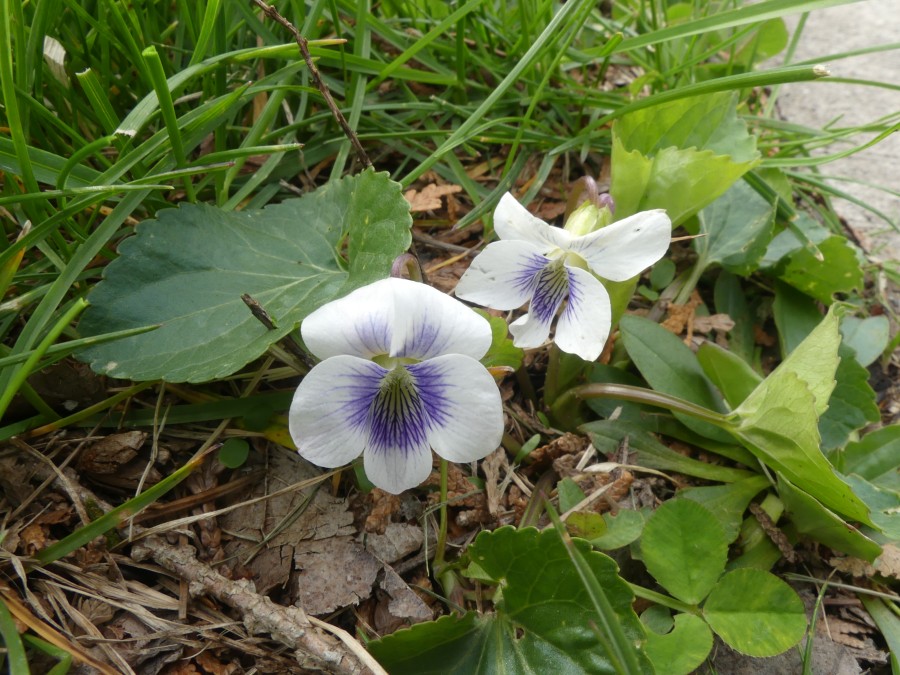
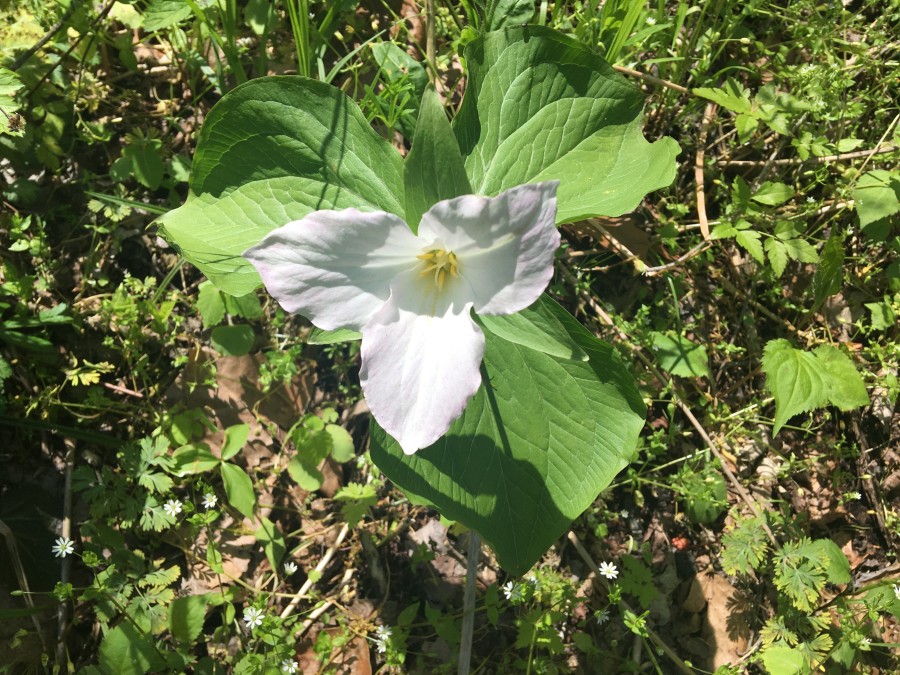
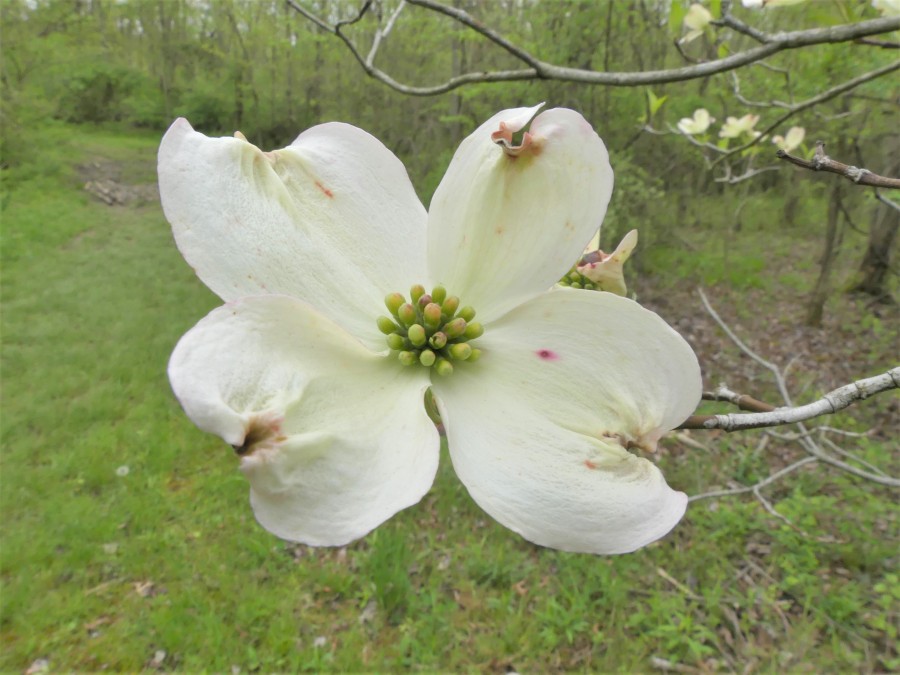


Woodland areas have a special appeal. There’s just something peaceful about being in a woods with few (if any) people around. I especially enjoy searching out fungi. Like this Cracked Cap Polypore (Phellinus robiniae). It’s a perennial and it typically grows on Locust trees. It grows a new polypore surface on the underside every year. It can be found on both living and dead Locust trees.
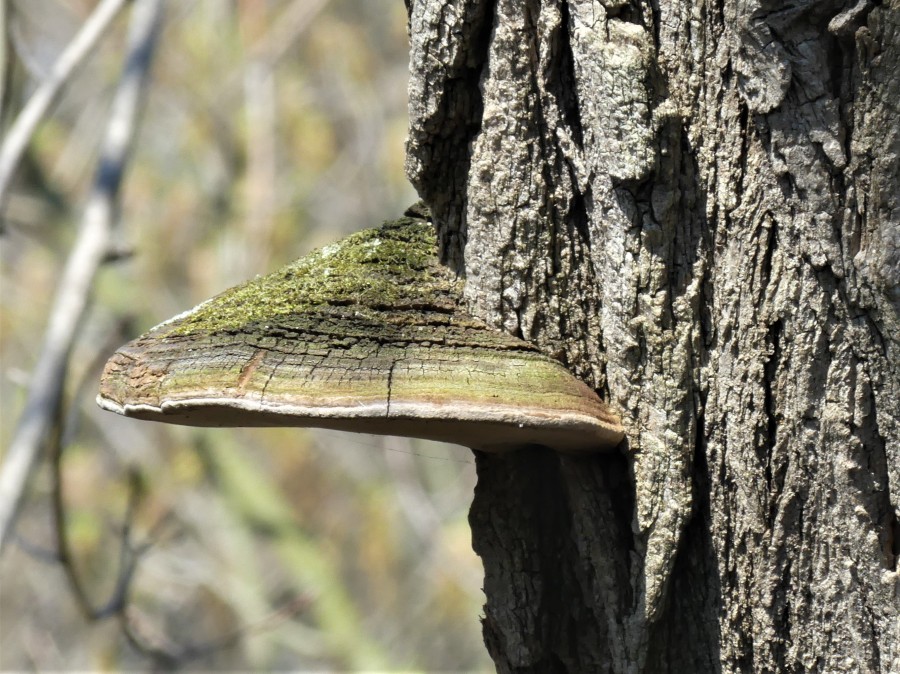
Here’s a pretty cool fungi called Devils Urn (Urnula craterium). It appears in the spring (March to May) and grows on fallen wood that is partially embedded in the ground. It can grow singly or in a small cluster. And it’s very easy to miss.

Dryad’s saddle (Cerioporus squamosus) can be found quite readily on dead logs or tree stumps. It decomposes logs but can also be a parasite on living trees as well. It has a thick stem and the fungi can grow to be up to 20 inches across. The underside has pores that are actually made up of tubes, some of which can be nearly 1/2 inch in length.




Here’s another interesting fungi, the Hexagonal-pored polypore (Polyporus alveolaris). They’re pretty cool looking as well. They can be orange to tan in color and are fan-shaped. Their underside pores are six-sided and look rather like a honeycomb when you look at them closely. It’s not easy to get photos of the underside without destroying the fungi.

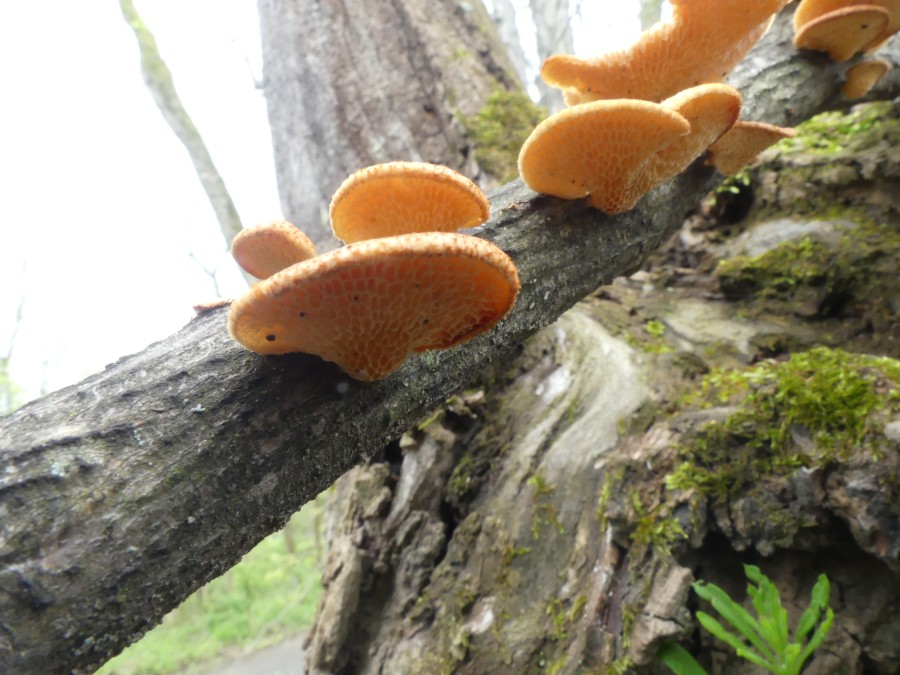

The Split Gill fungus (Schizophyllum commune) is a beautiful one I rarely see. It attaches to dead wood like a bracket fungi but has a white, hairy looking top and gill-like folds from a central point underneath. According to Wikipedia, “it is the only known fungi capable of retracting by movement.” Perhaps that refers to the fact that it shrivels when dry and revives when wet? Not sure… I wonder if they have “bad hair” days?
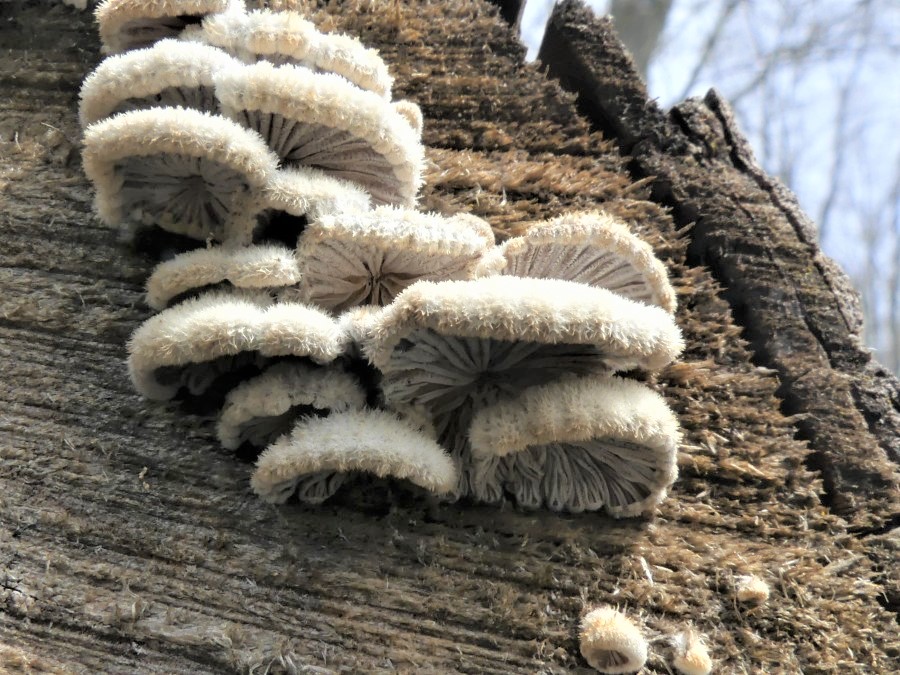
And one last fungi photo to share with you is what I believe to be Witches Butter (Tremella mesenterica). It’s somewhat similar in look to Orange Jelly (Dacrymyces palmatus) but Orange Jelly fungus grows on conifer logs and stumps, and Witches Butter grows on hardwoods. At least I think that branch is a hardwood.
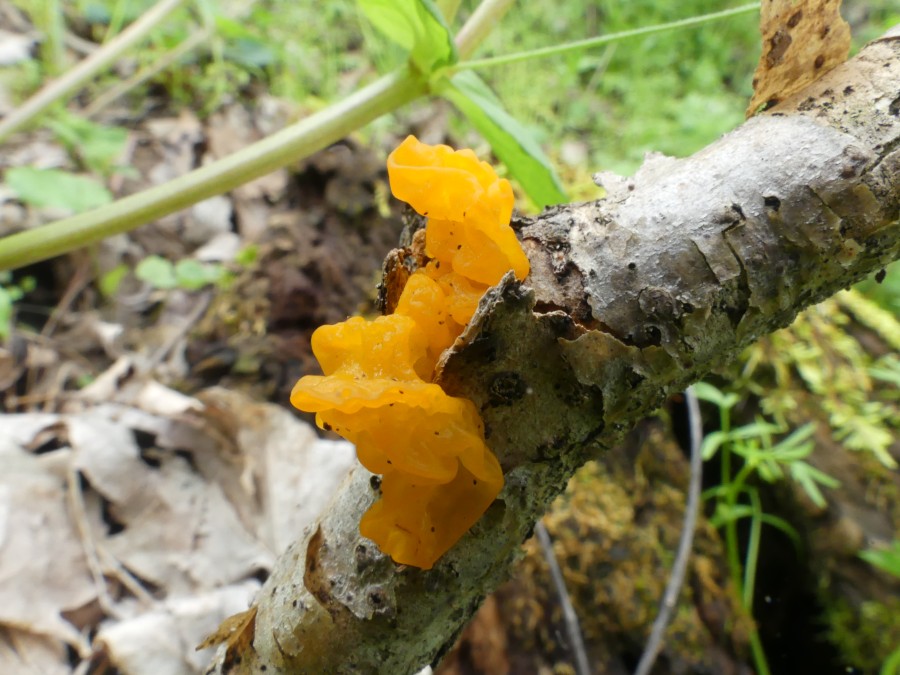
I hope some of my photos and wanderings have taken your mind off your worries and put a smile or two on your face, at least for a short time. There’s some pretty cool stuff out there to explore. Nature has so much to offer us. So next time when your shoulders feel weighted down a bit, I hope you grab your hiking shoes and go out to explore. You never know what you might see.

Until next time, keep exploring nature up close. And stay safe.
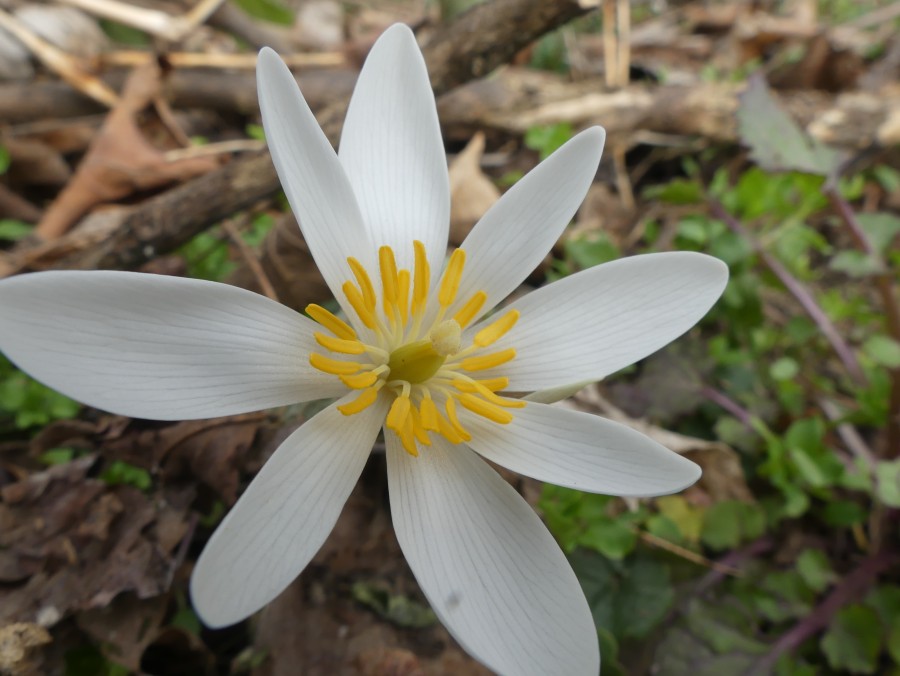

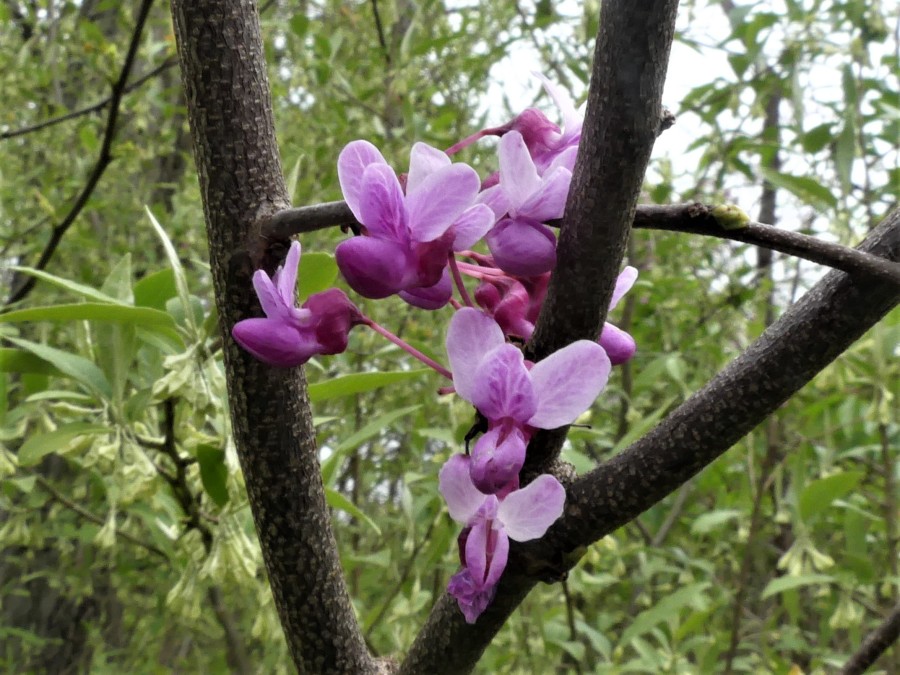
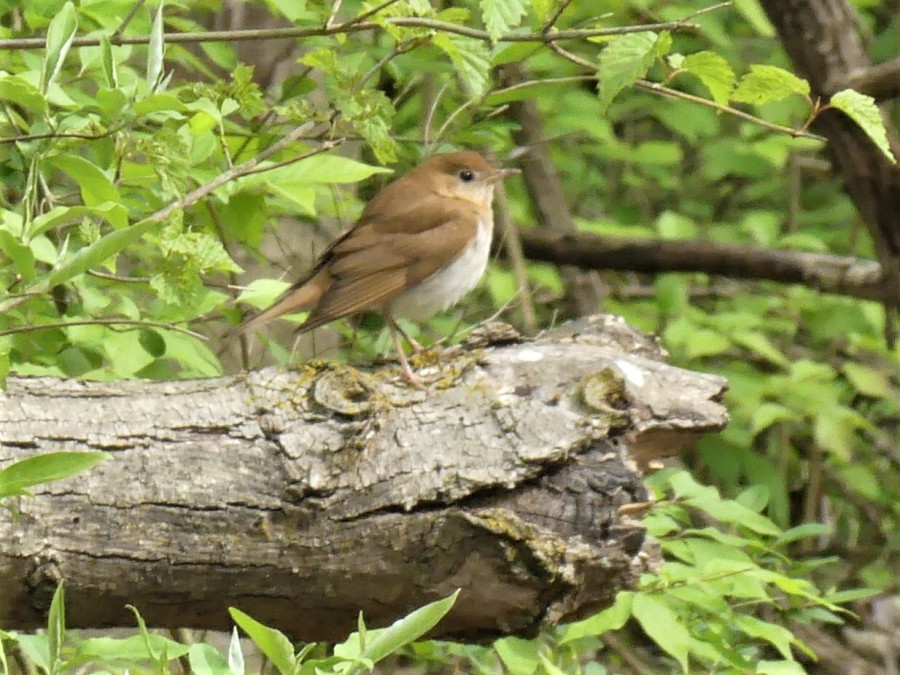

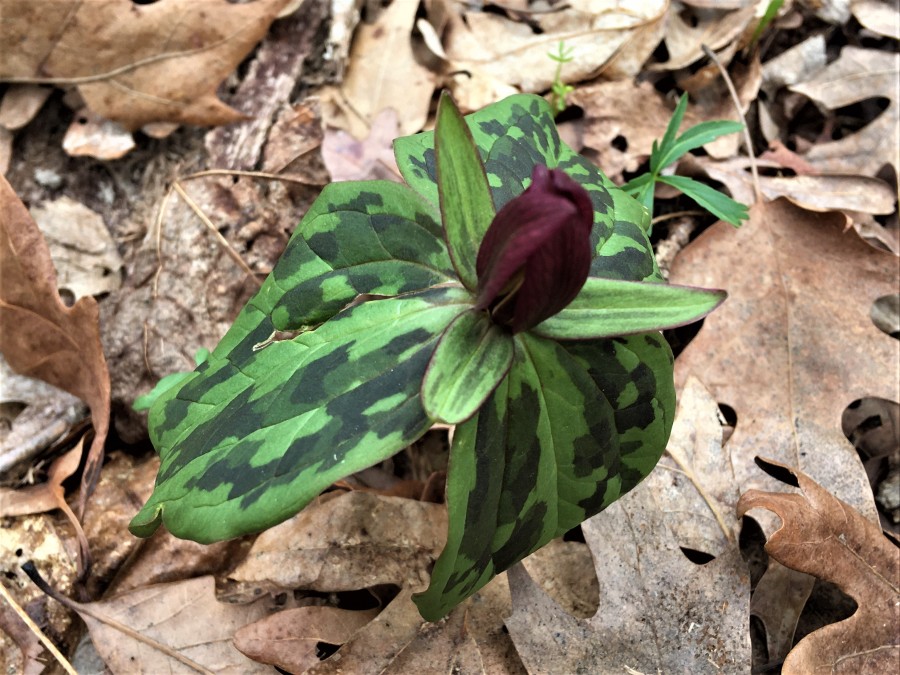



Enjoyed your post!
LikeLiked by 1 person